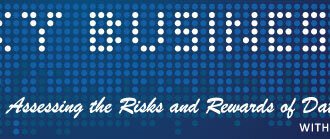Step by step guide on implementing a customer segmentation solution – without paying millions of dollars for an enterprise platform.
Customer micro-segmentation is without a doubt one of the most powerful methods for extracting value from your database, and a must for every frequent flyer loyalty program. Segmentation underpins almost every aspect of a successful program, from loyalty marketing, revenue management, member engagement and being able to measure analytics and achieve your set OKR & KPIs.
Step by step guide on implementing a customer segmentation solution – without paying millions of dollars for an enterprise platform.
Customer micro-segmentation is without a doubt one of the most powerful methods for extracting value from your database, and a must for every frequent flyer loyalty program. Segmentation underpins almost every aspect of a successful program, from loyalty marketing, revenue management, member engagement and being able to measure analytics and achieve your set OKR & KPIs.
Once customer database is properly segmented, appropriate data streams are attached and set to automatically populate — this will act as the fundamental driver behind ensuring relevant data is available on every member in real-time. Armed with real-time information, it’s an easy step to plug in your CRM systems and power up your new big revenue generating data machine.
Here’s how it’s done:
Step 1) Map out the framework
Roll your sleeves up and map out as many possible data points you can collect on your audience – for both customer and non-customers that visit your website/app. This list should be well in excess of 500 key data points and a good segmented program will have over 1,000 unique, individual data points on each member.
Aside from the basics; this is where you need to really shine and prove you understand your customers. Useful data points can include: Personality type, financial standing, family status, risk & adventure profiles, likelihood in % of the customer purchasing an airfare on each search query, cart abandonment statistics versus completed transaction (and types of transactions for both), and credit card positioning (which cards could you encourage them to take out right now).
Once identified your key data points – map it out starting from the beginning, exploring every possible option on every imaginable data point. This deep micro-segmentation will allow for maximum flexibility later on.

A visual representation of what your micro-segmented database will look like in the early stages.
Step 2) Assign Values to Each Segment
Each new segment you’ve now created should be assigned a number (1,2,3…), and will also serve as a way to calculate how many micro-segment pathways are in your customer database. There will likely be 100,000’s if not millions of values which create results that appear overwhelming. Storing these values against each user in the database will not only pinpoint exactly who the customer is, but also serve as an easy data marker for your data scientists to pick up and run modelling against.
You should do this for both members/customers – and for non-customers which you are hopefully tracking and logging data on, which can be married up against their actual profile once they turn into a fully-fledged customer.
Step 3) Link in your data streams
If you were to profile your database only once – the information would fast become irrelevant and begin to hinder any marketing efforts. To avoid this – we now need to plug in both internal and external data streams to maintain data accuracy, and preserve the goldmine of information you hold.
For example: Here are 3 ‘must have’ pieces of data every frequent flyer program must have on a customer, and what the information stream to keep it relevant might look like:
“Where does this customer live / home city?” Easily obtainable from the mailing address, and can even be cross-referenced with family members/same surname with matching IP address log-ins. Holding this information is mission-critical for many audience segments (Eg. A Family that always take 1-2 trips yearly) where knowing their likely departure port is part is a must.
“Where do we think the customer is right now?” Some information is available from flight data in your own and affiliate partner databases. Other data points can be extracted from the IP address the customer opens email communication from and where they log into our website/app from.
There are both free and paid data sources available for obtaining this information. Knowing where a customer is right now helps with not only with knowing their travel patterns (and with competitors), but also gives the opportunity to save on marketing wastage and keep offers relevant to their travel patterns by contributing towards a 360 degree view of their travel.
“Where will the customer be when the next piece of marketing communication is sent?” Great knowledge to have and will cut marketing wastage by knowing when not to send communication. Is a customer that matches X, and Y segment type likely to book a $49 ticket from Los Angeles to New York when you hold information that suggests they are on a 6 week ski trip in Japan? Instead, it makes way for new communication that re-enforces you understand the customer. “Summer Getaway? Tahiti awaits you…”
Getting segmentation right and utilizing big data sources isn’t rocket science, and every successful loyalty program has a varying degree of this model. Creating and perfecting an award winning model takes time, patience and smart people in your team, but ultimately the pay-off is huge and results will speak for themselves through new revenue to the bottom line.







